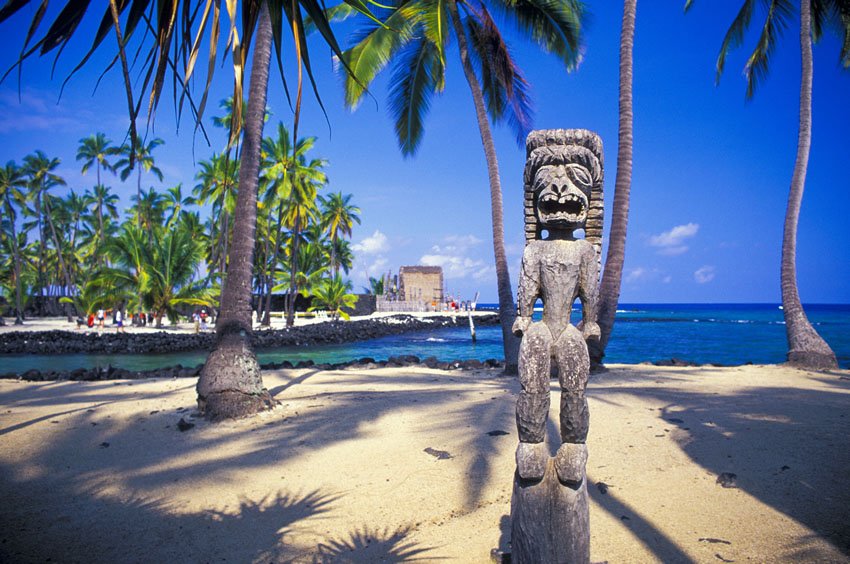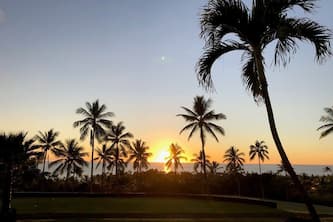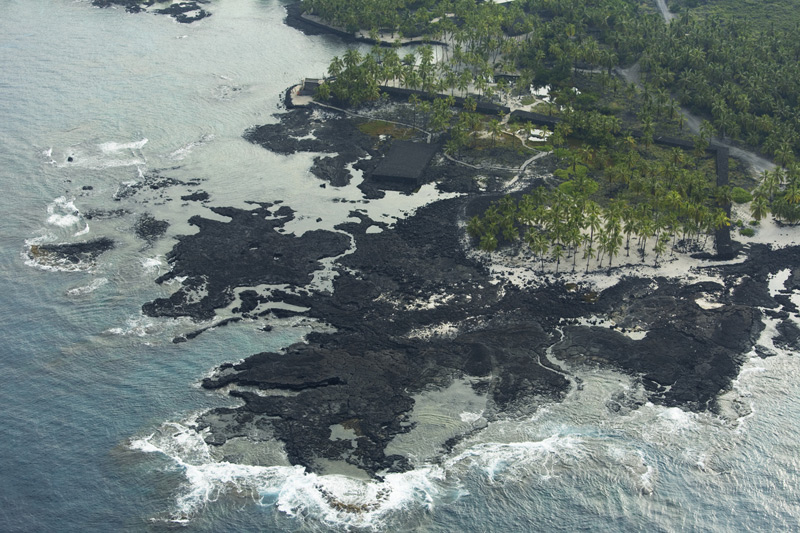Pu'uhonua o Honaunau National Historical Park

Pu'uhonua o Honaunau National Historical Park is one of the most sacred and culturally rich sites in Hawai'i. Located on the Big Island's South Kona coast, it once served as a royal residence and a refuge for kapu breakers - those who violated the ancient Hawaiian code of conduct. With restored temples, a Great Wall, ancient fishponds, and interpretive programs, this park offers an immersive experience into traditional Hawaiian law, belief systems, and daily life.
Pu'uhonua o Honaunau National Historical Park, Big Island
The Big Island has no shortage of historical wonders, but few can match the significance, or the local charm, of the Pu'uhonua o Honaunau National Historical Park. Located on the island's west coast, the park consists of two sections – the royal grounds and the pu'uhonua (place of refuge).
The ali'i (royals) of Kona and their warriors lived in the royal grounds. The Hale o Keawe Heiau (ancient temple), was built in 1650 and holds the remains of 23 ali'i. A few thatched huts and a fishpond are located in this area as well. Located nearby is a long stone slab that might look pretty normal at first glance. This is the Keoua Stone, named after the high chief Keoua of Kona, who used it as a resting place. Leading up to the heiau is the Great Wall, which separates the royal grounds from the pu'uhonua, an ancient place of refuge for Hawaiians who broke the law.
In ancient Hawaii, the kapu (taboo) system was the law all people had to live by. A commoner was not allowed to look at the ali'i, touch them, or even walk in their footsteps. Women were not allowed to cook for men or eat together with them. There were many rules. If a commoner did something that was kapu, the penalty was death because it was believed that breaking a law made the gods angry, who could easily send a lava flow or tsunami to kill all. So to appease the gods, violators of the kapu system were killed.
However, there was one way to escape death and save your life. If you were able to get to a pu'uhonua, then you would be given an absolution ceremony and be spared. A pu'uhonua was a sanctuary, not only for kapu breakers, but also for defeated warriors. However, it was difficult to get to a pu'uhonua because the royals and warriors lived in the surrounding area.
So you either had to run faster than the angry warriors chasing you on land, or swim to it and beat rough ocean currents, waves, and hungry sharks on the way. But once inside the sanctuary, kahuna (priests) performed ceremonies to please the gods and kapu breakers were then able to be released into the community.
The park is also home to a large population of honu, the revered green sea turtles. Most of them take refuge in the Keone'ele, which was once the royal canoe landing and forbidden to commoners.
Key Features of Pu'uhonua o Honaunau National Historical Park
- Pu'uhonua (place of refuge): Sacred sanctuary where lawbreakers could be forgiven and warriors could seek safety
- Hale o Keawe Heiau: Royal temple constructed in 1650 housing remains of 23 ali'i (chiefs)
- Royal Grounds: Living site of Kona ali'i and home to cultural features like fishponds and canoe landings
- Great Wall: Massive 10-foot high, 17-foot wide lava wall that separates the royal area from the place of refuge
- Annual cultural festival: Held each July 1, featuring hula, food, crafts, and traditional fishing practices (hukilau)
- Interpretive programs: Ranger talks offered daily and accessible trail with signage for self-guided tours
- Honu viewing: Green sea turtles are commonly seen basking near Keone'ele, the sacred canoe landing




Frequently Asked Questions
What was a pu'uhonua used for?
In ancient Hawaii, a pu'uhonua served as a place of refuge for people who broke kapu (taboo laws) or were fleeing conflict. If they reached the sanctuary, they could be absolved by priests and reintegrated into society.
Who lived in the royal grounds?
The royal grounds were home to Kona's ali'i (chiefs) and warriors. It included ceremonial structures, fishponds, and the royal canoe landing.
What is the Great Wall?
The Great Wall is a 10-foot-high lava rock structure that separates the royal compound from the pu'uhonua, symbolizing both physical and spiritual boundaries.
When is the cultural festival held?
The annual festival is on July 1 and includes traditional foods, hula, music, Hawaiian crafts, and demonstrations like hukilau net fishing.
Is the park accessible for people with disabilities?
Yes, the park offers beach wheelchairs at no charge and has accessible paths with interpretive signs for all visitors to enjoy.
















